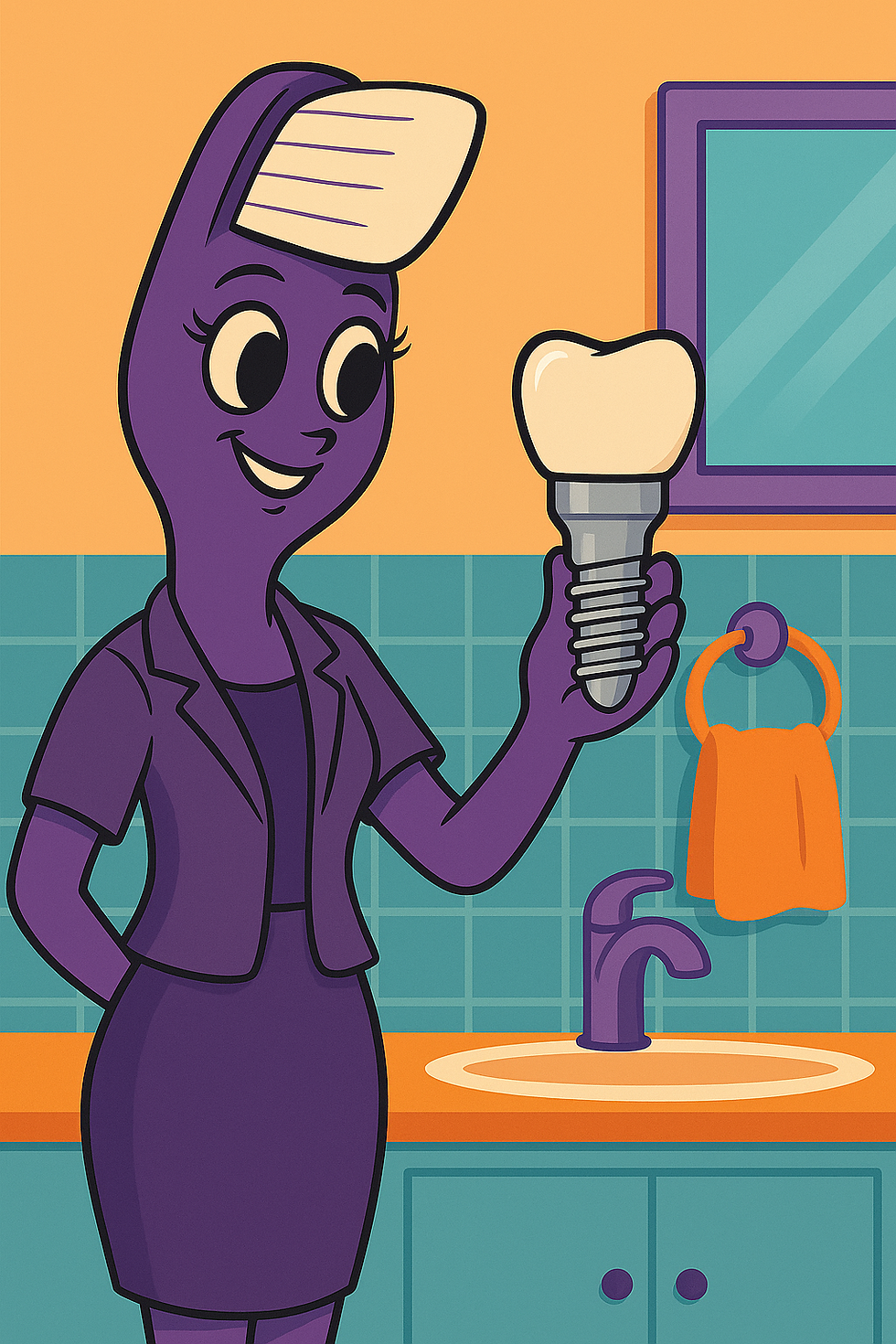Root Canal Rendezvous: Less Scary Than a Bad Blind Date
- naytoghlo
- Apr 18
- 3 min read
Updated: May 6

Okay, deep breath. Just hearing the words "root canal" can make some people picture scary medieval tools, right? We get it! Root canals have a bit of a bad reputation, often fuelled by outdated stories or movie exaggerations.
But here's the truth: Root canals aren't the villains; they're actually the heroes that save teeth!
Think of this post as your friendly guide to understanding what a root canal really is, why you might need one, and why it's way less scary than you think.
What's Going On Inside Your Tooth?
Imagine your tooth isn't just a solid block. It has layers:
Enamel: The super-hard, white outer shell (like the roof of a house).
Dentin: A yellowish layer beneath the enamel (the walls).
Pulp: The soft stuff deep inside (the 'living room'). This is where the tooth's nerves, blood vessels, and connective tissue live. It's what keeps the tooth alive and feeling things.

Why Would You Need a Root Canal?
A root canal becomes necessary when that inner pulp gets infected or inflamed. This usually happens because of:
Deep Cavities: Germs burrowing through the enamel and dentin reach the pulp.
Cracks or Chips: Damage creates an entryway for bacteria.
Repeated Dental Work: Sometimes, multiple procedures on one tooth can stress the pulp.
Trauma: A knock to the tooth (even if it doesn't crack) can damage the pulp.
When the pulp is compromised, it can cause serious pain, sensitivity to hot/cold, swelling, or even lead to an abscess (a pocket of infection at the root tip). If left untreated, the infection can spread, and you might lose the tooth entirely.
The Root Canal Procedure: Basically, a Deep Clean!
So, what actually happens during the procedure? Think of it less like torture and more like a super-thorough deep cleaning for the inside of your tooth:

Numbing is Key: First things first, we make sure the area is completely numb using local anesthetic. Seriously, you shouldn't feel pain during the procedure! The goal is comfort.
Accessing the Pulp: Your dentist makes a small opening in the top of the tooth to reach the infected pulp chamber and root canals (the tiny tunnels running down the roots).
Cleaning Time: Using specialized, tiny instruments (think microscopic pipe cleaners!), the dentist carefully removes the damaged pulp, cleans out the infection, and shapes the canals.
Filling and Sealing: Once clean, the canals are filled with a rubber-like, biocompatible material (usually gutta-percha) and sealed off to prevent anything from getting back in.
Restoration: Often, a tooth that needs a root canal also needs extra support afterwards. A filling or, more commonly, a crown is placed on top to protect the tooth and restore its full function.
Busting the Biggest Myth: Pain!
Let's tackle the elephant in the room. The infection is what causes the severe pain before the root canal. The procedure itself is done under anesthesia to relieve that pain. Most patients report feeling pressure, similar to getting a regular filling, but not sharp pain. Afterwards, there might be some tenderness as the area heals, but it's usually manageable with over-the-counter pain relief.
What About Saving the Pulp? (Vital Pulp Therapy)
You might hear about something called "Vital Pulp Therapy" (VPT). Think of this as an attempt to save the pulp beforeit gets fully infected or damaged beyond repair. It's like trying to fix the 'living room' plumbing leak before the whole room floods.
VPT involves placing special materials directly on or near the pulp to help it heal and stay alive. This is often possible in younger teeth or when the damage/decay hasn't reached too deep. It's a fantastic option when suitable, as it keeps the tooth fully "alive." However, it's not always possible – if the infection is too widespread or the pulp is irreversibly damaged, a full root canal is the necessary step to save the tooth structure itself.
The Bottom Line
Root canals are a safe, effective, and common procedure designed to eliminate infection, relieve pain, and save your natural tooth from needing to be pulled. They allow you to keep smiling, chewing, and talking naturally for years to come.
So, next time you hear "root canal," remember it's not the enemy – it's often the best solution for a troubled tooth. If you have any questions or concerns, always talk to your dentist. We're here to help you understand your options and keep your smile healthy!
Here's to healthy smiles, inside and out!
Dr. Noor N. AyToghlo



Comments